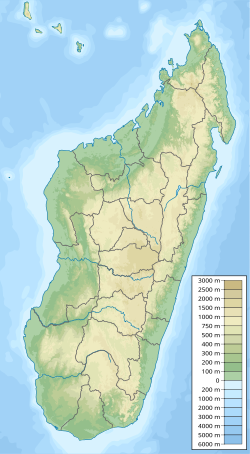| Isalo II Formation | |
|---|---|
| Stratigraphic range: Ladinian-Carnian | |
| Type | Geological formation |
| Unit of | Isalo Group |
| Underlies | Isalo III Formation (unconformity) |
| Overlies | Isalo I Formation |
| Lithology | |
| Primary | Sandstone, mudstone |
| Location | |
| Coordinates | 20°18′S45°24′E / 20.3°S 45.4°E |
| Approximate paleocoordinates | 23°06′S24°42′E / 23.1°S 24.7°E |
| Region | Mahajanga & Toliara Provinces |
| Country | Madagascar |
| Extent | Morondava Basin, Mahajanga Basin |
Isalo II, also known as the Makay Formation, is an informal Triassic geological unit in Madagascar. [1]
Contents
It is described as "thick beds of mottled red or green clays associated with soft cross-bedded sandstones, light in colour and much finer-grained than the Isalo I sandstones." It is prominent in the Makay Massif. [2]
